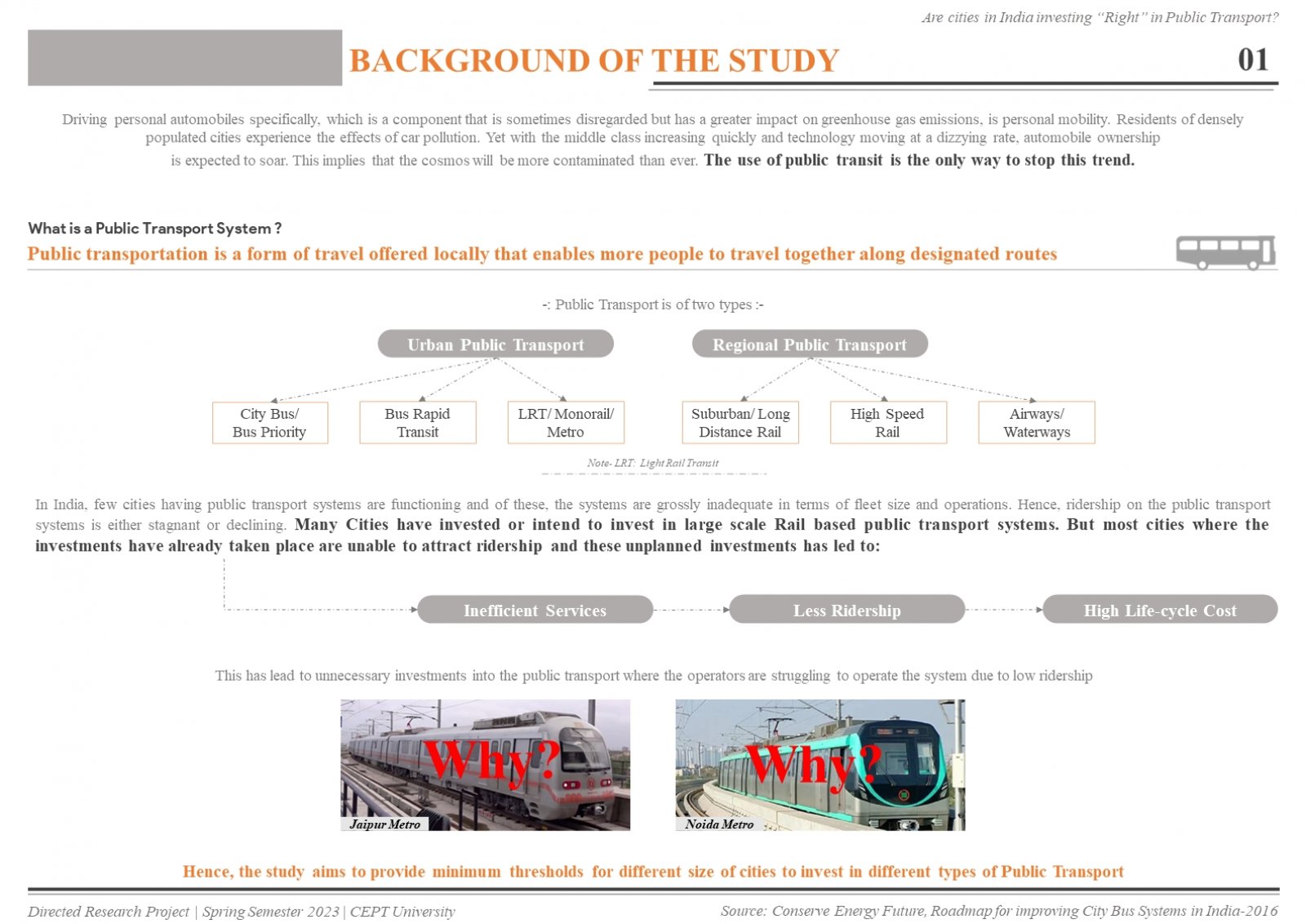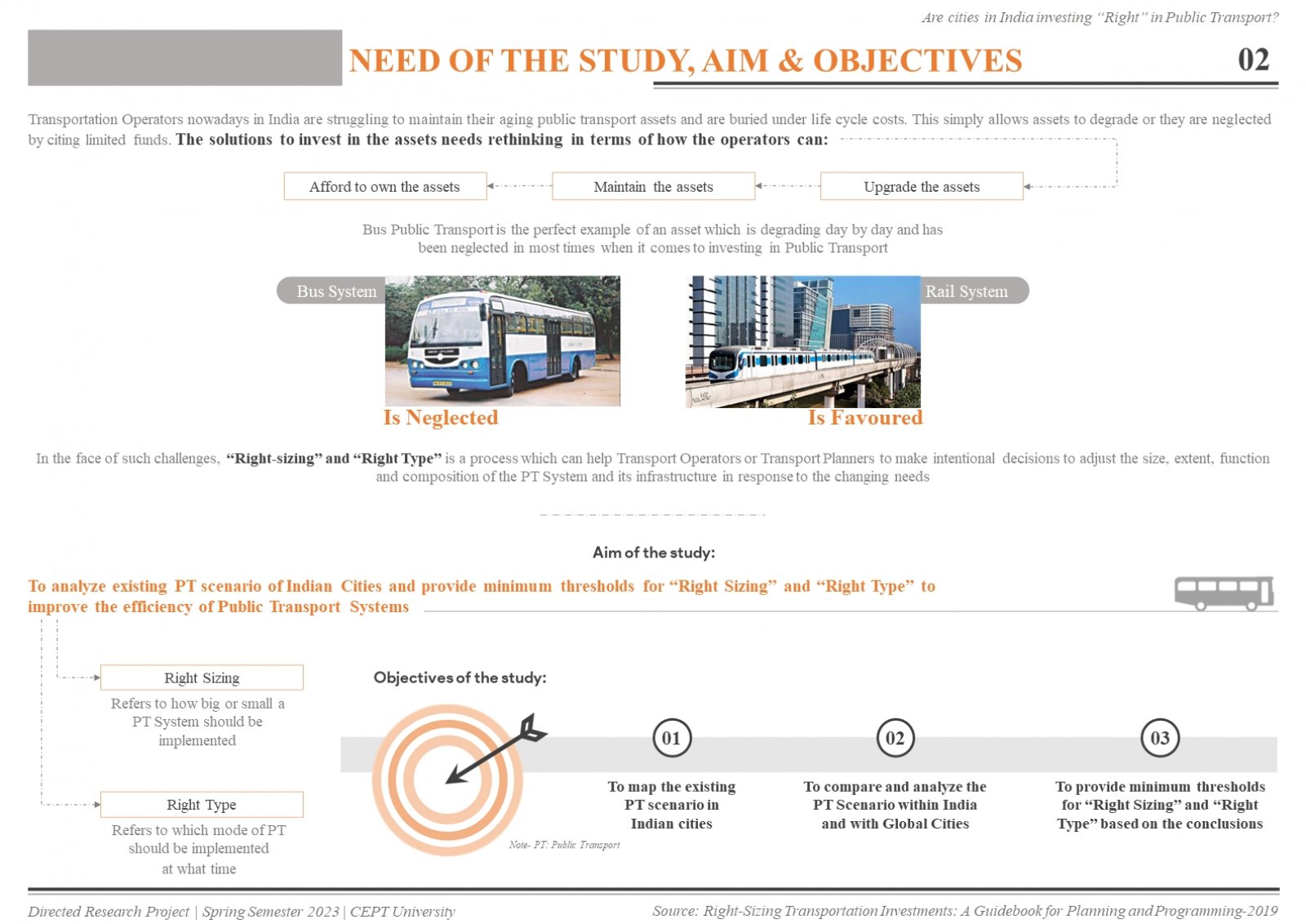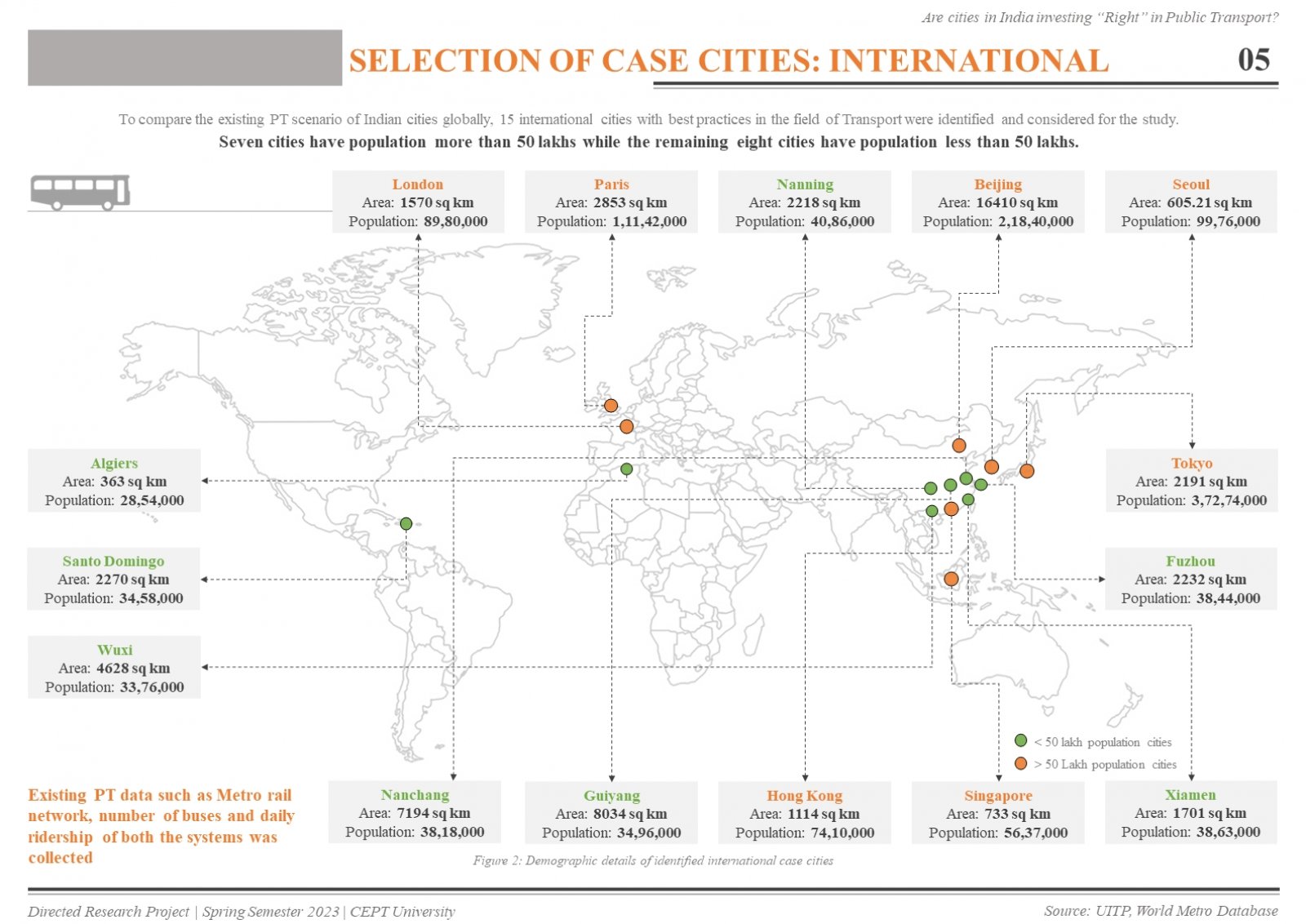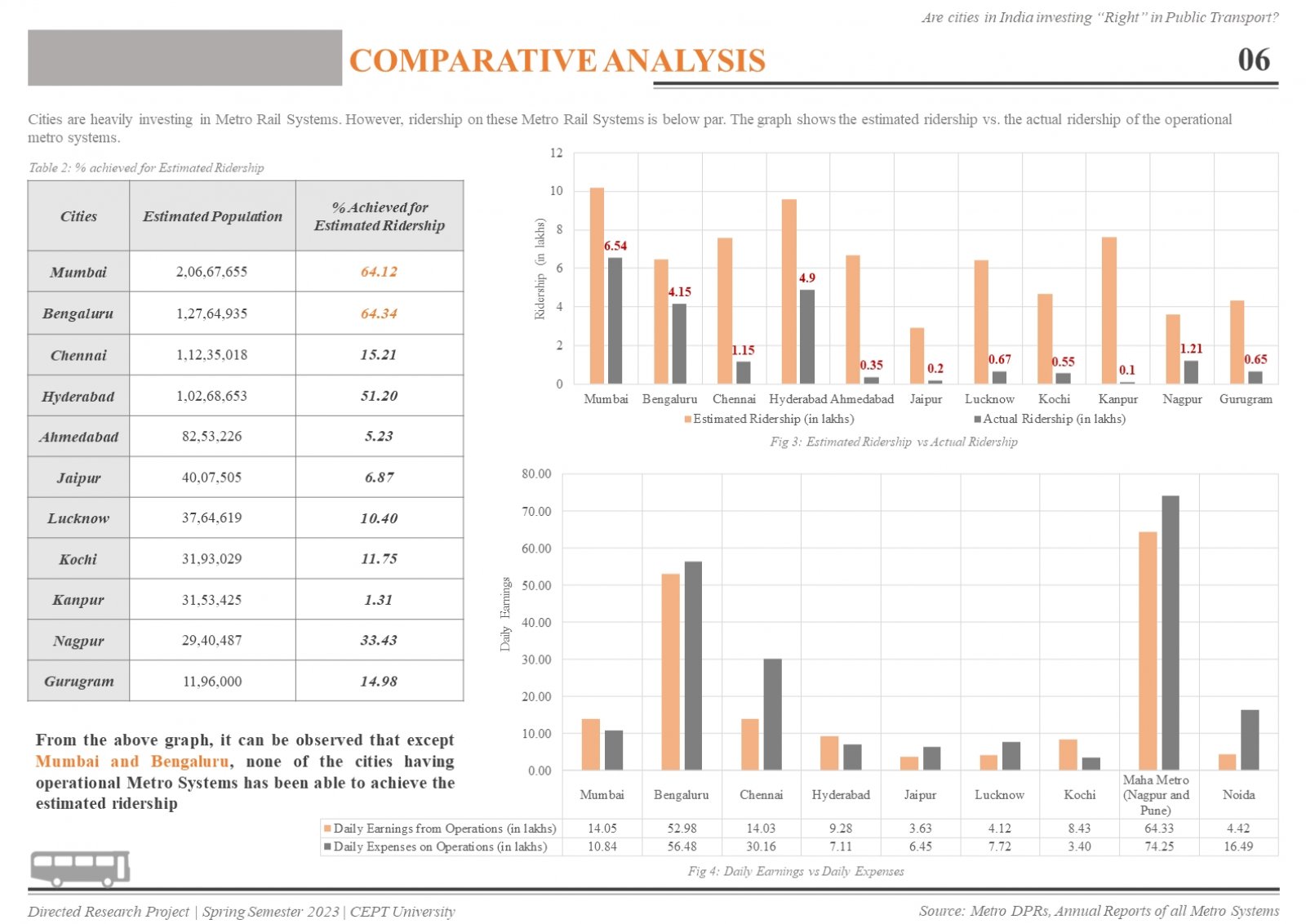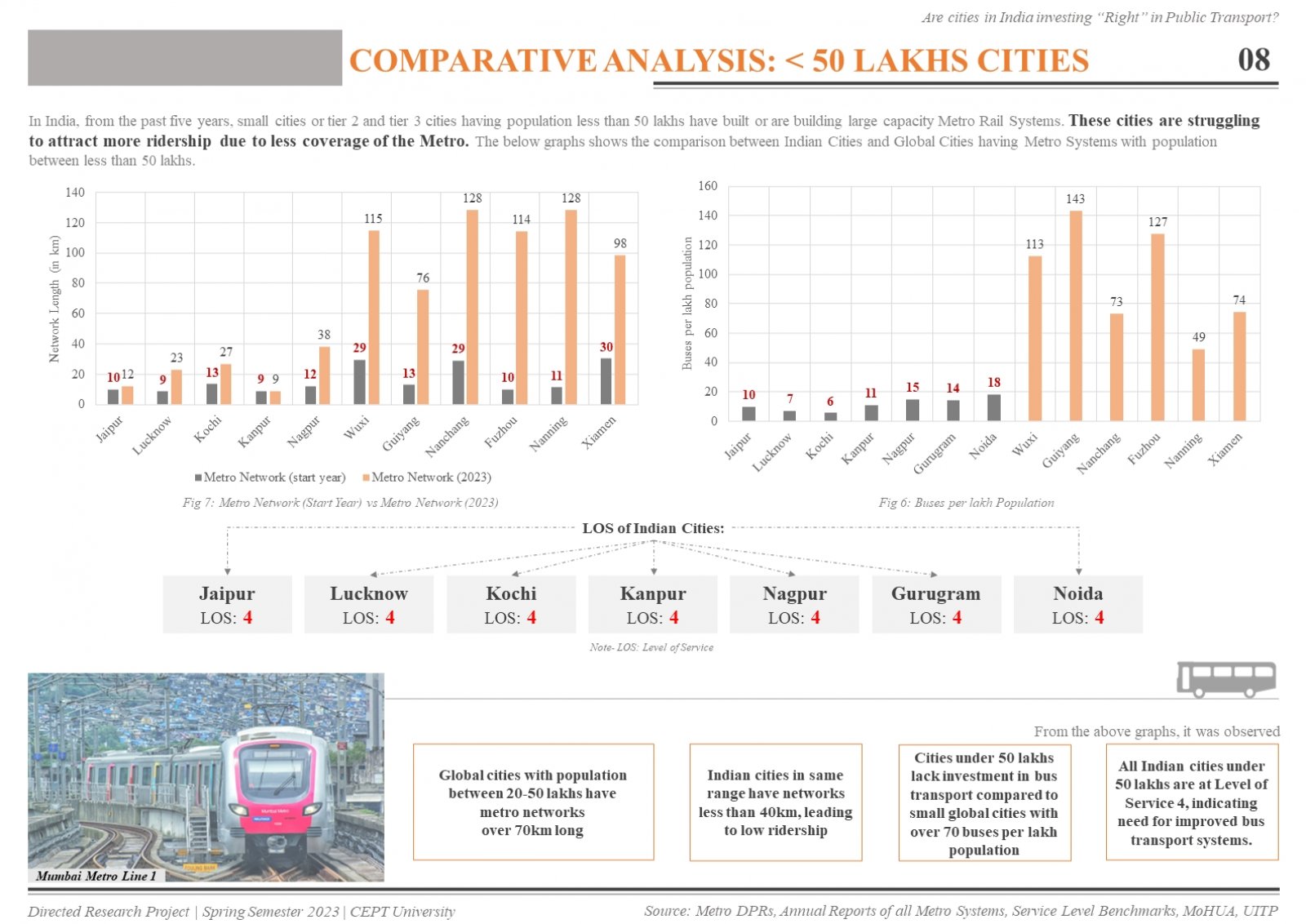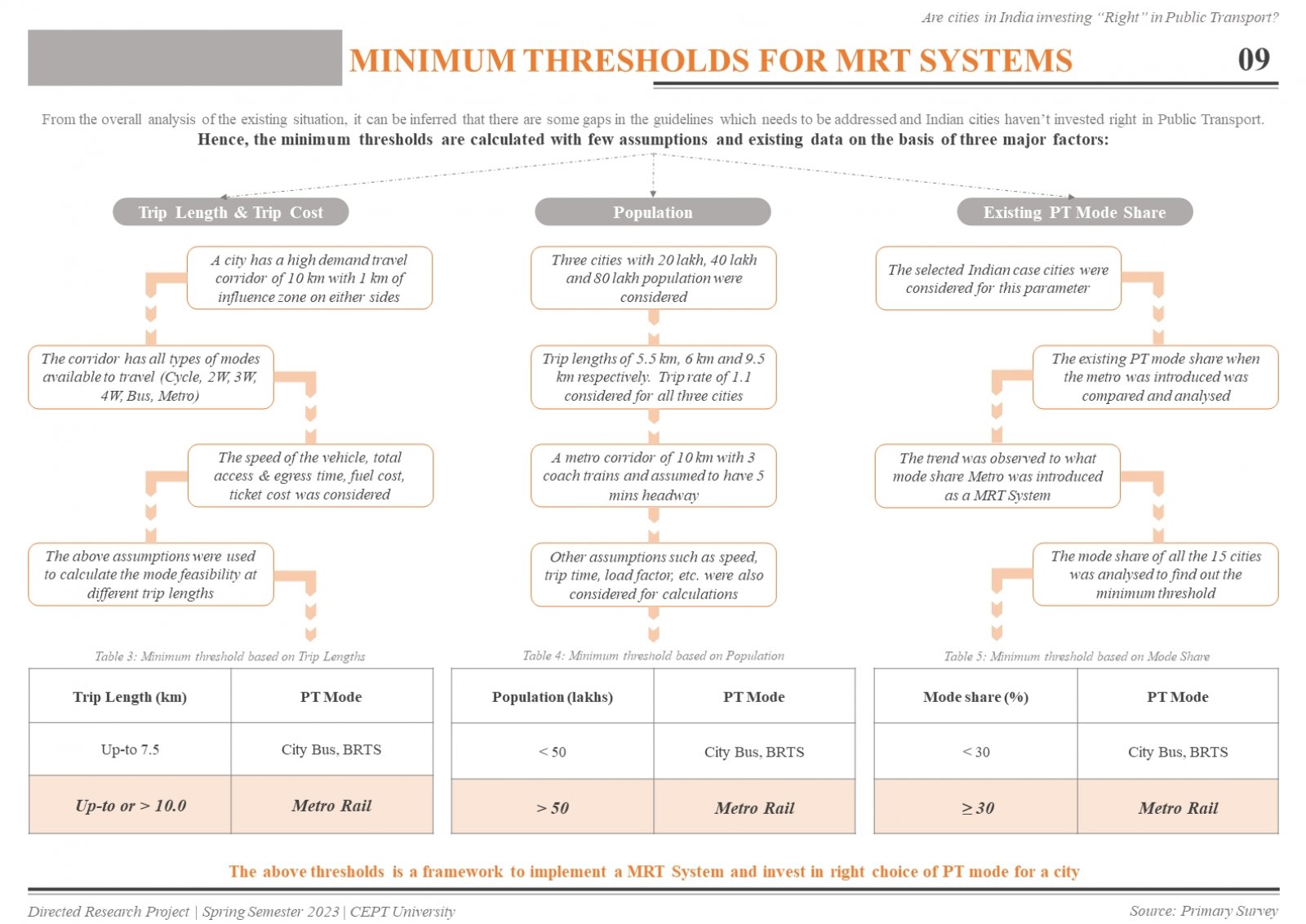Your browser is out-of-date!
For a richer surfing experience on our website, please update your browser. Update my browser now!
For a richer surfing experience on our website, please update your browser. Update my browser now!
The rapid urbanization and growth of Indian cities can be attributed to the expanding industry, increased economic activity, and employment opportunities. The number of metropolitan areas with a population of one million or more has also significantly increased, from 35 in 2001 to 50 in 2011, as per the Census of India. With urbanization, accessibility, and mobility increasing, people's needs have also grown, resulting in an increase in the number of journeys. However, only a few Indian cities have well-functioning public transport systems, and even these systems suffer from gross inadequacies in terms of fleet size and operations. As a result, public transport ridership has either remained stagnant or declined. To address this issue, many cities have invested or plan to invest in large-scale rail-based public transport systems. However, in cities where such investments have already been made, ridership is not commensurate with the capacity of the systems, and agencies are finding it challenging to operate services. The absence of proper rules on when and how much to invest in the urban transport sector has resulted in unnecessary investments in the wrong choice of public transport mode for a city, leading to agencies incurring significant losses. And hence, the study aims to provide minimum thresholds to implement a MRT System for Indian cities.
